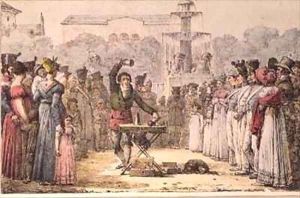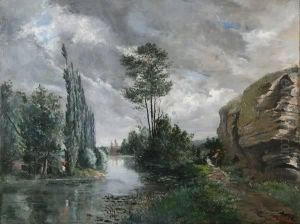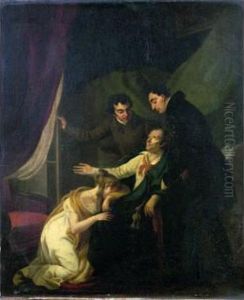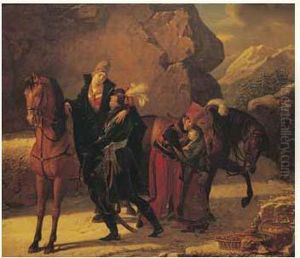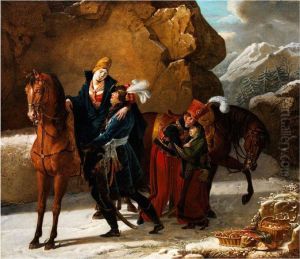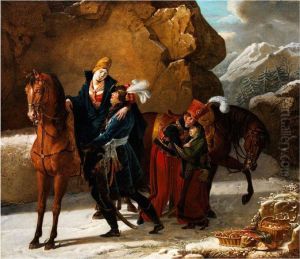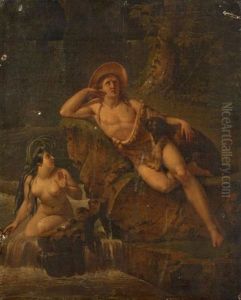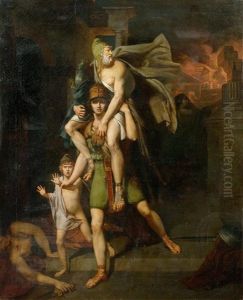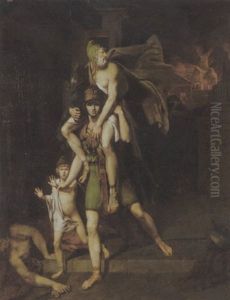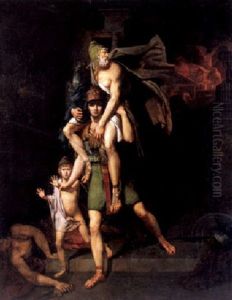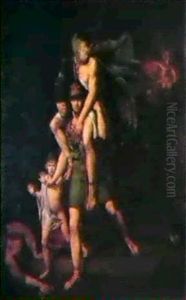Charles Brocas Paintings
Charles Brocas was a French artist born in 1771 in Bordeaux, France. He was primarily known for his work as an engraver and painter. During his lifetime, Brocas was part of the artistic movement that followed the French Revolution, which saw significant changes in the art world. Unfortunately, not as much is widely known about Brocas's life and work as some of his contemporaries. His works, however, indicate that he was a skilled artist of his time.
Brocas was active during a period that saw the transition from the Rococo style, which was characterized by ornate and elaborate art, to Neoclassicism, which drew inspiration from the art and culture of Ancient Greece and Rome. This was a time when artists were beginning to move away from the commissioned portraits and religious themes that had dominated the art world in favor of more secular and historical subjects. Brocas's engravings and paintings reflect this shift in artistic focus. He may have received his training in Paris, which was the center of the art world in France during that period.
Throughout his career, Charles Brocas created works that were influenced by the prevailing artistic trends of his time. He exhibited his works at the Salon, the official art exhibition of the Académie des Beaux-Arts in Paris. The Salon was the most important art event in the Western world during the 18th and 19th centuries. Exhibiting at the Salon was a significant achievement for any artist and played a crucial role in establishing an artist's reputation.
Brocas's death in 1850 marked the end of a career that had spanned a turbulent time in French and European history, which included the French Revolution, the Napoleonic Wars, and the Restoration period. While Brocas may not have achieved the same level of fame as some of his peers, his works remain a testament to the artistic transitions of his era. Today, art historians and collectors study his engravings and paintings as examples of early 19th-century French art. Although specific details of his life and career may be less documented, the legacy of artists like Charles Brocas is preserved through the art they left behind, which continues to be appreciated for its historical and aesthetic value.
